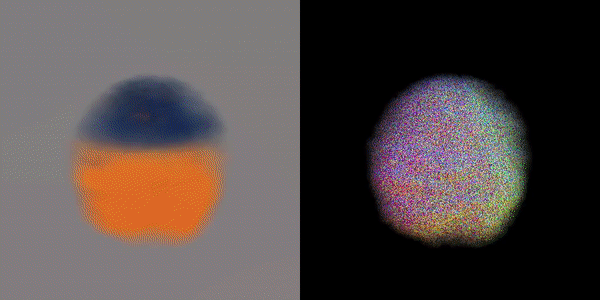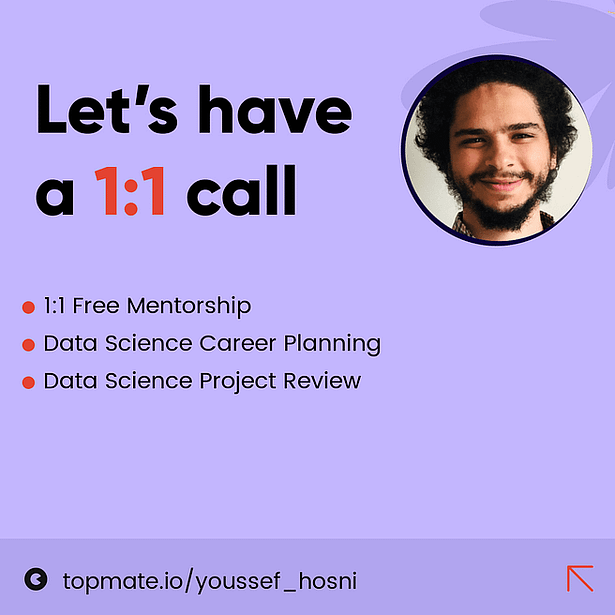Top Important Computer Vision Papers from 28/8 to 3/9
Stay Relevant to Recent Computer Vision Research
Computer vision, a field of artificial intelligence that enables machines to interpret and understand the visual world, is rapidly evolving with groundbreaking research and technological advancements.
On a weekly basis, several top-tier academic conferences and journals showcased innovative research in computer vision, presenting exciting breakthroughs in various subfields such as image recognition, vision model optimization, generative adversarial networks (GANs), image segmentation, video analysis, and more.
In this article, we will provide a comprehensive overview of the most significant papers published in the last week of August 2023, highlighting the latest research and advancements in computer vision. Whether you’re a researcher, practitioner, or enthusiast, this article will provide valuable insights into the state-of-the-art techniques and tools in computer vision.
Table of contents:
Image Recognition
Video Analysis & Understanding
Image Generation
Are you looking to start a career in data science and AI and need to learn how? I offer data science mentoring sessions and long-term career mentoring:
Mentoring sessions: https://lnkd.in/dXeg3KPW
Long-term mentoring: https://lnkd.in/dtdUYBrM
All the resources and tools you need to teach yourself Data Science for free!
The best interactive roadmaps for Data Science roles. With links to free learning resources. Start here: https://aigents.co/learn/roadmaps/intro
The search engine for Data Science learning recourses. 100K handpicked articles and tutorials. With GPT-powered summaries and explanations. https://aigents.co/learn
Teach yourself Data Science with the help of an AI tutor (powered by GPT-4). https://community.aigents.co/spaces/10362739/
1. Image Recognition
1.1. Emergence of Segmentation with Minimalistic White-Box Transformers
Transformer-like models for vision tasks have recently proven effective for a wide range of downstream applications such as segmentation and detection. Previous works have shown that segmentation properties emerge in vision transformers (ViTs) trained using self-supervised methods such as DINO, but not in those trained on supervised classification tasks.
In this study, we probe whether segmentation emerges in transformer-based models solely as a result of intricate self-supervised learning mechanisms, or if the same emergence can be achieved under much broader conditions through proper design of the model architecture. Through extensive experimental results, we demonstrate that when employing a white-box transformer-like architecture known as CRATE, whose design explicitly models and pursues low-dimensional structures in the data distribution, segmentation properties, at both the whole and parts levels, already emerge with a minimalistic supervised training recipe. Layer-wise finer-grained analysis reveals that the emergent properties strongly corroborate the designed mathematical functions of the white-box network. Our results suggest a path to design white-box foundation models that are simultaneously highly performant and mathematically fully interpretable.
2. Video Analysis & Understanding
2.1. SportsSloMo: A New Benchmark and Baselines for Human-centric Video Frame Interpolation
Human-centric video frame interpolation has great potential for improving people’s entertainment experiences and finding commercial applications in the sports analysis industry, e.g., synthesizing slow-motion videos. Although there are multiple benchmark datasets available in the community, none of them is dedicated to human-centric scenarios.
To bridge this gap, we introduce SportsSloMo, a benchmark consisting of more than 130K video clips and 1M video frames of high-resolution (geq720p) slow-motion sports videos crawled from YouTube. We re-train several state-of-the-art methods on our benchmark, and the results show a decrease in their accuracy compared to other datasets. It highlights the difficulty of our benchmark and suggests that it poses significant challenges even for the best-performing methods, as human bodies are highly deformable and occlusions are frequent in sports videos.
To improve the accuracy, we introduce two loss terms considering the human-aware priors, where we add auxiliary supervision to panoptic segmentation and human key points detection, respectively. The loss terms are model-agnostic and can be easily plugged into any video frame interpolation approach. Experimental results validate the effectiveness of our proposed loss terms, leading to consistent performance improvement over 5 existing models, which establish strong baseline models on our benchmark.
1.2. Eventful Transformers: Leveraging Temporal Redundancy in Vision Transformers
Vision Transformers achieve impressive accuracy across a range of visual recognition tasks. Unfortunately, their accuracy frequently comes with high computational costs. This is a particular issue in video recognition, where models are often applied repeatedly across frames or temporal chunks. In this work, we exploit temporal redundancy between subsequent inputs to reduce the cost of Transformers for video processing. We describe a method for identifying and re-processing only those tokens that have changed significantly over time. Our proposed family of models, Eventful Transformers, can be converted from existing Transformers (often without any re-training) and give adaptive control over the compute cost at runtime. We evaluate our method on large-scale datasets for video object detection (ImageNet VID) and action recognition (EPIC-Kitchens 100). Our approach leads to significant computational savings (on the order of 2–4x) with only minor reductions in accuracy.
3. Image Generation
3.1. ORES: Open-vocabulary Responsible Visual Synthesis
Avoiding synthesizing specific visual concepts is an essential challenge in responsible visual synthesis. However, the visual concept that needs to be avoided for responsible visual synthesis tends to be diverse, depending on the region, context, and usage scenarios. In this work, we formalize a new task, Open-vocabulary Responsible Visual Synthesis (ORES), where the synthesis model is able to avoid forbidden visual concepts while allowing users to input any desired content. To address this problem, we present a Two-stage Intervention (TIN) framework. By introducing 1) rewriting with learnable instruction through a large-scale language model (LLM) and 2) synthesizing with prompt intervention on a diffusion synthesis model, it can effectively synthesize images avoiding any concepts but following the user’s query as much as possible. To evaluate ORES, we provide a publicly available dataset, baseline models, and benchmark. Experimental results demonstrate the effectiveness of our method in reducing the risks of image generation. Our work highlights the potential of LLMs in responsible visual synthesis. The code and dataset are publicly available.
3.2. Any-Size-Diffusion: Toward Efficient Text-Driven Synthesis for Any-Size HD Images
Stable diffusion, a generative model used in text-to-image synthesis, frequently encounters resolution-induced composition problems when generating images of varying sizes. This issue primarily stems from the model being trained on pairs of single-scale images and their corresponding text descriptions. Moreover, direct training on images of unlimited sizes is unfeasible, as it would require an immense number of text-image pairs and entail substantial computational expenses.
To overcome these challenges, we propose a two-stage pipeline named Any-Size-Diffusion (ASD), designed to efficiently generate well-composed images of any size, while minimizing the need for high-memory GPU resources. Specifically, the initial stage, dubbed Any Ratio Adaptability Diffusion (ARAD), leverages a selected set of images with a restricted range of ratios to optimize the text-conditional diffusion model, thereby improving its ability to adjust composition to accommodate diverse image sizes.
To support the creation of images at any desired size, we further introduce a technique called Fast Seamless Tiled Diffusion (FSTD) at the subsequent stage. This method allows for the rapid enlargement of the ASD output to any high-resolution size, avoiding seaming artifacts or memory overloads. Experimental results on the LAION-COCO and MM-CelebA-HQ benchmarks demonstrate that ASD can produce well-structured images of arbitrary sizes, cutting down the inference time by 2x compared to the traditional tiled algorithm.
3.3. MVDream: Multi-view Diffusion for 3D Generation
We propose MVDream, a multi-view diffusion model that is able to generate geometrically consistent multi-view images from a given text prompt. By leveraging image diffusion models pre-trained on large-scale web datasets and a multi-view dataset rendered from 3D assets, the resulting multi-view diffusion model can achieve both the generalizability of 2D diffusion and the consistency of 3D data. Such a model can thus be applied as a multi-view prior for 3D generation via Score Distillation Sampling, where it greatly improves the stability of existing 2D-lifting methods by solving the 3D consistency problem. Finally, we show that the multi-view diffusion model can also be fine-tuned under a few shot settings for personalized 3D generation, i.e. DreamBooth3D application, where the consistency can be maintained after learning the subject identity.
Looking to start a career in data science and AI do not know how. I offer data science mentoring sessions and long-term career mentoring:
Mentoring sessions: https://lnkd.in/dXeg3KPW
Long-term mentoring: https://lnkd.in/dtdUYBrM












👏👏👏👏👏👏